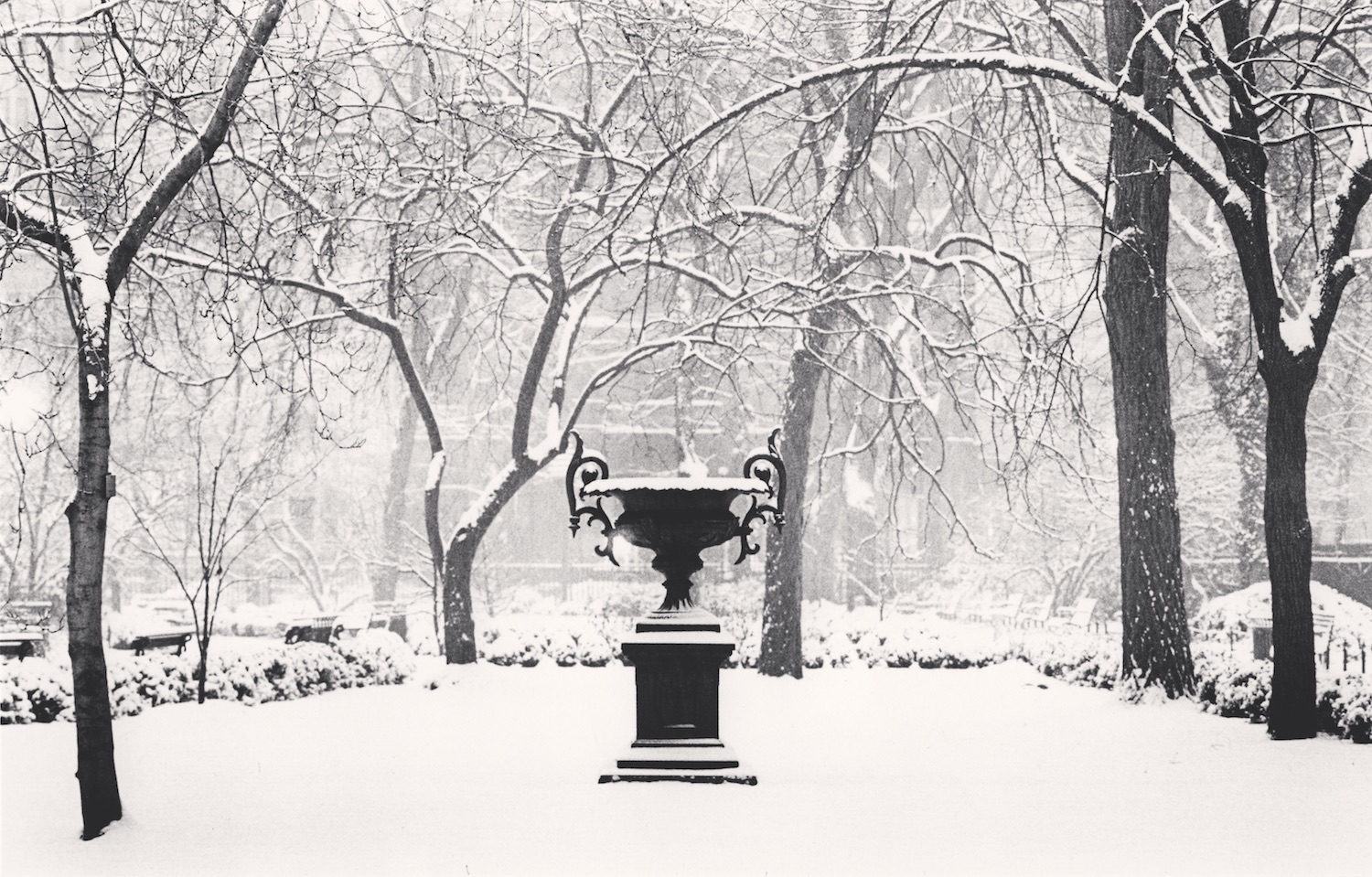
Photo by Michael Kenna/Supervision
An urn stands like a sentry in the after-the-snowfall stillness of New York’s Gramercy Park.
While a garden at its summer peak is a rainbow of undulating waves of color, perfumed air, and birds singing, the result can be a cacophony of sensual chaos. Beautiful, voluptuous, and abundant, a garden in summer is to be enjoyed, lingered in, and bragged about. Winter, on the other hand, is a chance to have a meaningful and measured conversation with the garden, like sitting in silence with a good friend who understands the importance of moments such as this.
Taking time to muse, wander, wonder, and delight during this season is to connect with the garden on a more cerebral level. Like a silent walk in the woods, the opportunity to experience its dreamy poetry is akin to having an uninterrupted tête-à-tête. As if we are writing a story around an outline we’ve been given, winter requires our patience and fills in the blank pages with promises and possibilities.
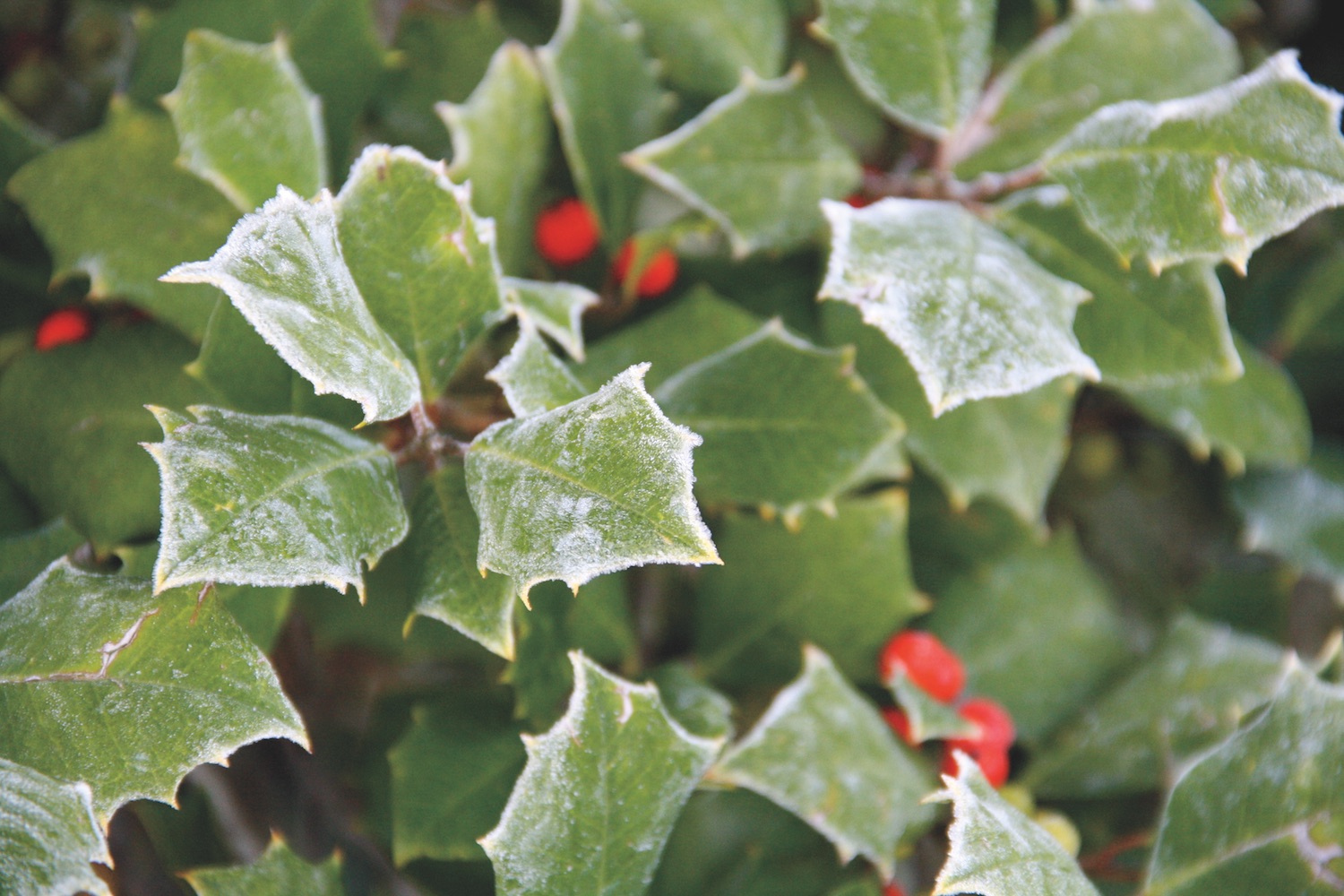
Photo by Charlotte Moss
Reduced to a skeletal state, a garden in winter gives our imaginations an opportunity to explore those possibilities. It allows our eyes the chance to be a paintbrush, devising new color schemes and filling in borders. On the other hand, we may choose to simply enjoy the bones of the pleached hedge, the peeling bark of the crape myrtle, the remnants of bittersweet, and the welcome hues of viburnum berries. Early morning walks reveal piles of oak leaves silver-plated with frost and holly trees standing boastful and defiant in a blaze of color.
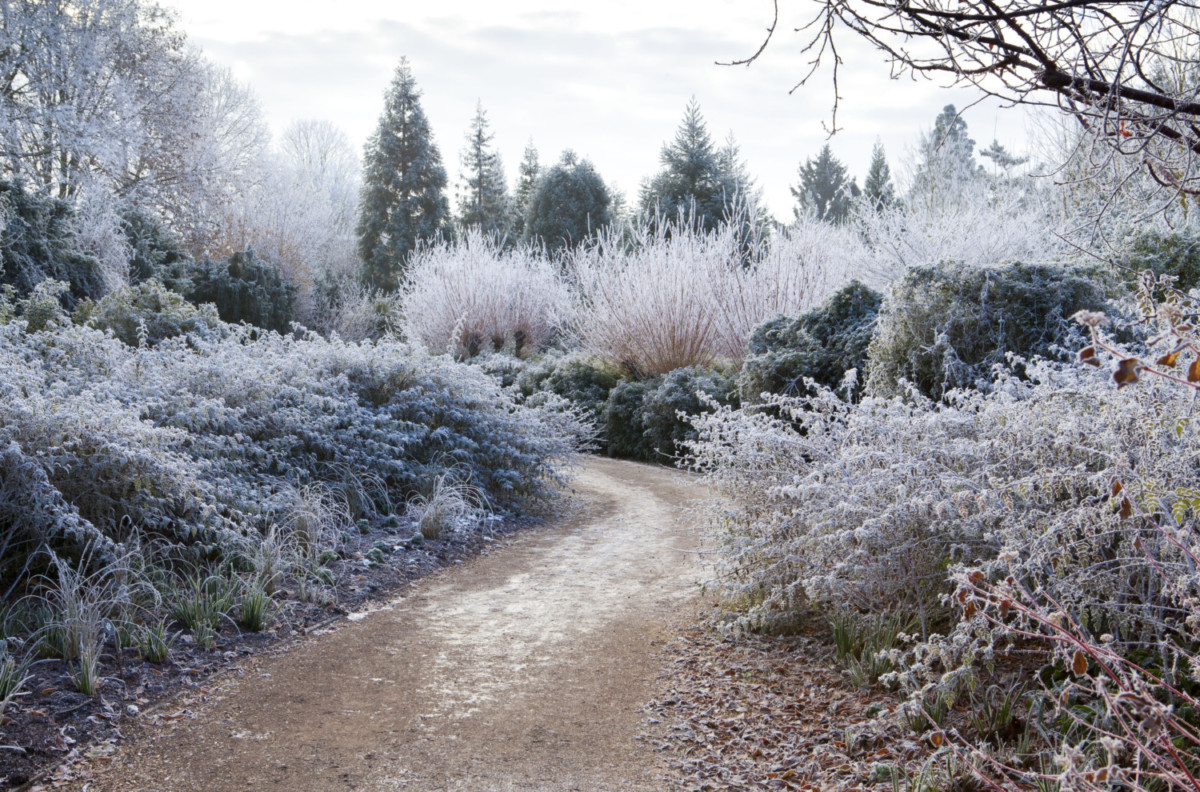
Photo by Charlotte Moss
A winter walk down a garden path encourages looking at plantings in a different way, taking in the textures and nuances of color versus the abundance that summer growth brings.
When I travel in winter, I still want to see any garden on my route. I feel informed by it in a different kind of way—more understanding, more attached. Perhaps it is just like an acquaintance who has quietly let her guard down. And I know as the temperature warms and I return again, I will see the other, more boisterous side of her personality.
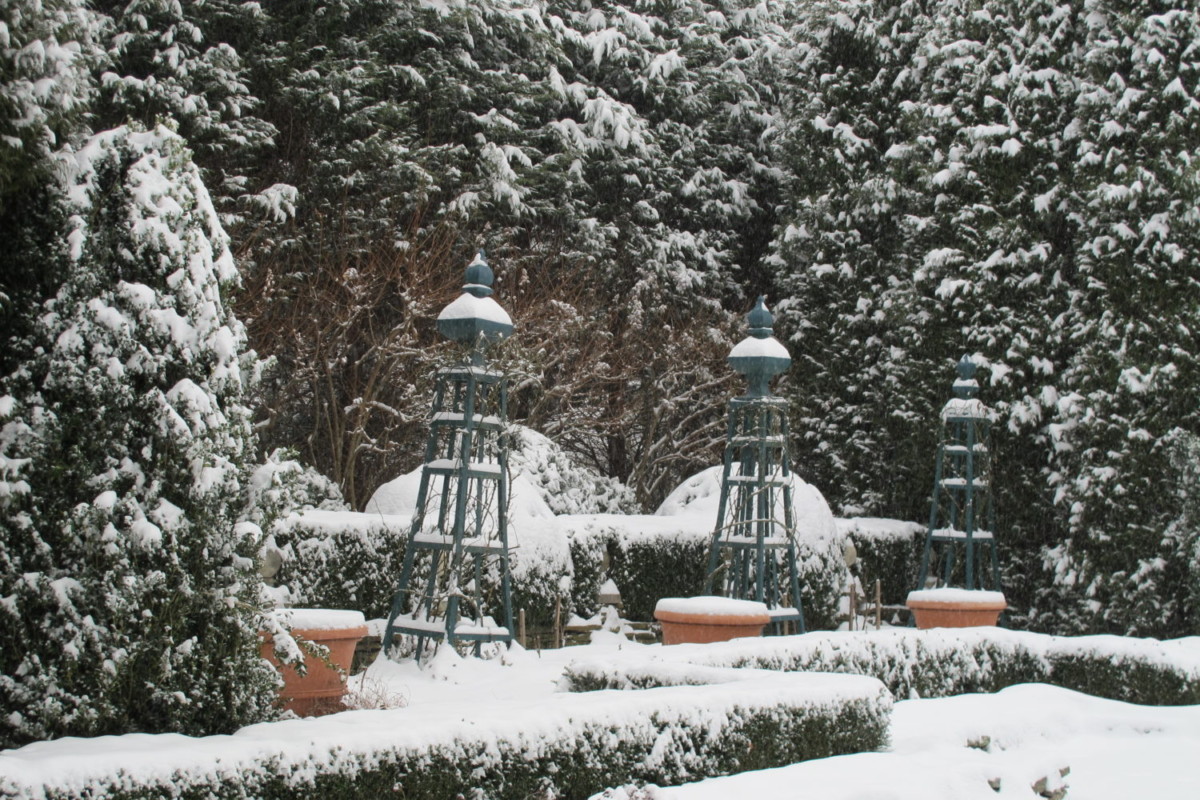
Photo by Charlotte Moss
The author’s own garden shows of its wintry face, with snowcapped tuteurs parading like soldiers against the hedges.
A winter garden is like a perfect black-and-white photo, an old movie, an X-ray. Every nuanced shade of gray is awakened in a season otherwise viewed as colorless, when all growth is stalled. But look again, and color schemes beg to be noticed. The herbaceous border left to remain, now in shades of blonde and silver gray, stands in contrast with old yews, creating a dramatic scene. While branches of various cornus are a rainbow of reds fading to yellow, the stark white bodies of birch trees make their own ghostly statement.
The omnipresent, limitless, and ever-faithful sky, a constant in every garden, at times evokes a canopy of blue that can become a Matisse cutout, silhouetting shapely trees and the leafless framework of others. White fences and black iron gates add geometry and outlines that draw the eye in a more focused way. Trellises and arbors, now naked, give us graphic art with their shapes and patterns.

Photo by Charlotte Moss
Antique urns wrapped in burlap blankets to protect them from the cold.
Just as in a well-decorated room, the garden also relies on its furniture and accessories. Benches of any kind still dutifully beckon us to come sit, enjoy the view, and contemplate the current state of affairs. Statues, urns, and other ornaments will knowingly and patiently look forward to being enveloped in green once again, but for the time being, they are the show. Pots, troughs, and planters, small and large, now empty, will dream of the return of summer’s abundance. Though all these things may be inanimate, they surely take on whatever we viewers project upon them.
The dormant state of a garden in winter metaphorically speaks to what gardening is all about—a process. The cycle of life, death, and rebirth is the story of any garden, ever changing. Winter is the great equalizer, whether it comes to a front-yard bed or acres of them.
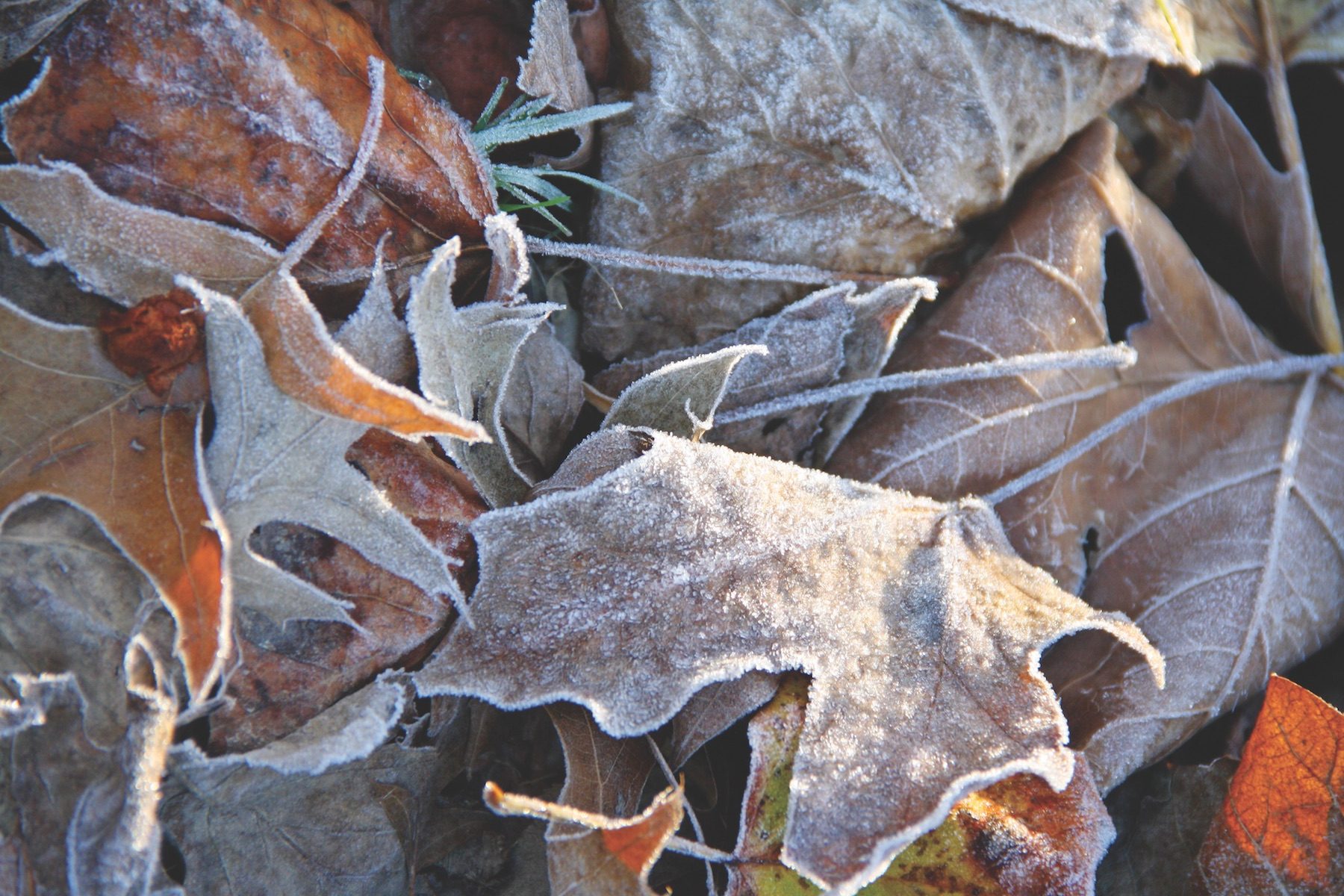
Photo by Charlotte Moss
We pine for those tiny sprouts, those early chartreuse buds and leaves. They give us hope and, like a trumpet, announce that the flower fashion show of spring will soon begin. We feel reborn as our senses emerge from hibernation, a protracted holding pattern. We are like schoolchildren who have just heard the last bell of the year. Ah, but without winter, we would not know these joys.
Text and photography by Charlotte Moss



